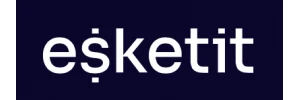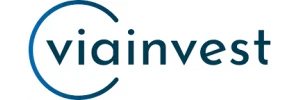PenFed Credit Union: A Legacy of Member-Focused Lending in the USA
Pentagon Federal Credit Union, commonly known as PenFed Credit Union, is a venerable financial institution with a rich history rooted in the United States. Established in 1935, it operates under a federal charter, regulated by the National Credit Union Administration (NCUA). As a member-owned cooperative, PenFed's fundamental business model differs significantly from traditional banks. Instead of generating profits for external shareholders, its earnings are reinvested to benefit its members through more favorable interest rates on loans, higher yields on savings, and reduced fees.
Initially, PenFed served military personnel and federal government employees, a foundational aspect of its identity. Over the decades, its membership eligibility expanded considerably. Today, any United States resident can join PenFed Credit Union, typically by opening a Regular Share account with a modest five-dollar deposit. This inclusive approach has propelled PenFed to become the third-largest federal credit union in the nation, boasting nearly three million members and an impressive asset size of 32.7 billion dollars as of 2024. Its leadership, including President and CEO Jim Schenck, guides its strategic direction, focusing on robust financial services delivered with a commitment to member value.
This enduring structure and commitment to its members position PenFed as a compelling alternative for American consumers seeking a range of financial products, from everyday banking to significant loan financing. Its strong foundation, coupled with a forward-looking digital strategy, ensures its continued relevance in the competitive United States financial landscape.
Detailed Look at PenFed's Loan Products and Financial Services
PenFed Credit Union offers a broad spectrum of loan products designed to meet diverse financial needs for its members across the United States. These offerings are characterized by competitive rates and often fewer fees compared to commercial banks, aligning with its member-first philosophy.
Unsecured Personal Loans:
- Loan Amounts: Members can borrow between 600 dollars and 50,000 dollars.
- Annual Percentage Rates (APRs): Rates generally range from 7.99 percent to 17.99 percent, contingent on the borrower's creditworthiness.
- Terms: Repayment periods extend from 12 months to 60 months.
- Fees: Notably, PenFed personal loans carry no origination fee. A late payment fee of 29 dollars applies if a payment is over five days late.
Auto Loans:
- Financing: Available for both new and used vehicles, with financing up to 150,000 dollars.
- APRs: Highly competitive, with rates as low as 3.79 percent for customers using the TrueCar service.
- Terms: Flexible repayment terms stretching up to 84 months.
- Refinance Offers: PenFed often provides bonus offers, sometimes up to 350 dollars, for qualifying auto loan refinances. No origination fees apply to auto loans.
Mortgages:
- Types: PenFed provides both fixed-rate and adjustable-rate mortgages.
- Loan Amounts: Available up to conforming limits, suitable for a wide range of home purchases and refinances.
- APRs: Rates vary daily based on market conditions, loan-to-value (LTV) ratios, and the borrower's credit score.
Credit Cards:
- Options: A selection of rewards and fixed-rate credit cards are available.
- APRs: Rates typically fall between 8.99 percent and 18.00 percent.
- Annual Fees: Some cards have no annual fee, while others may carry a fee ranging from 0 to 49 dollars, depending on the specific card product.
Student Loan Refinancing:
- Options: Both variable and fixed-rate refinancing solutions are offered.
- APRs: Rates can be as low as 2.99 percent and go up to 8.99 percent.
- Terms: Repayment terms are flexible, ranging from 5 to 20 years.
Regarding collateral, unsecured personal loans require none. Auto loans are secured by the vehicle's title, and mortgages are secured by the property deed. The credit union's transparent fee structure, particularly the absence of origination fees on many of its popular loan products, underscores its value proposition to members.
Application Process, Underwriting, and Digital Experience
Navigating the application process at PenFed Credit Union is designed to be accessible and straightforward for members across the United States, utilizing both digital and traditional channels. The credit union has invested significantly in its digital infrastructure to provide a seamless user experience.
Potential borrowers can initiate loan applications through several convenient channels: the PenFed mobile app, its comprehensive website at penfed.org, by telephone, or in person at one of its 50 physical branch locations spread across 13 states and military bases in Guam, Japan, and Puerto Rico. This multi-channel approach ensures that members can choose the method that best suits their preferences.
The Know Your Customer (KYC) and onboarding process begins with a soft credit pull if a member wishes to check potential rates without impacting their credit score. However, a full loan application will trigger a hard inquiry. Identity and income verification are standard requirements, typically involving scanned documents such as government-issued identification, recent pay stubs, and tax returns. A crucial step for non-members is establishing membership by making the required five-dollar minimum deposit into a Regular Share account.
PenFed’s underwriting methodology is thorough, considering several key factors to determine loan approval and the assigned Annual Percentage Rate (APR). These factors include the applicant's credit score, income, debt-to-income ratio (DTI), and even their tenure as a PenFed member. For borrowers with limited credit history or those aiming for a lower interest rate, PenFed offers a co-borrower option, which can significantly improve approval chances and rate eligibility.
Once approved, loan disbursement methods are efficient. Funds can be transferred via Automated Clearing House (ACH) directly to a PenFed account or an external bank account, typically arriving by the next business day. A paper check option is also available, usually taking five to seven business days. For any loans that become delinquent, PenFed follows standard collection practices, including automated reminders and late-fee assessments, and may refer seriously overdue accounts to collections agencies in line with NCUA guidelines.
The PenFed Mobile App:
The
- Mobile Check Deposit: Conveniently deposit checks using a smartphone camera.
- Bill Pay: Manage and schedule payments for various bills.
- Account Alerts: Stay informed with customizable notifications regarding account activity.
- ATM/Branch Locator: Easily find nearby PenFed branches and CO-OP or Allpoint ATM network locations.
- Loan Tracking: Monitor loan balances, payment history, and progress.
- Digital Wallet Integration: Seamlessly connect with popular digital wallets for easy transactions.
- Real-time Notifications: Receive immediate updates on important account activities.
The PenFed website also serves as a comprehensive online banking portal, offering live chat support, various loan calculators, and direct digital application capabilities, ensuring that members have extensive tools at their fingertips.
Regulatory Oversight, Customer Experience, and Market Standing
PenFed Credit Union operates under stringent regulatory frameworks, which are crucial for consumer protection and maintaining trust within the United States financial system. As a federally chartered credit union, it is primarily overseen and regulated by the National Credit Union Administration (NCUA). This oversight ensures adherence to federal laws, including the Bank Secrecy Act and Fair Lending laws, which promote transparency, fairness, and security in its operations. Members’ deposits are insured by the NCUA up to 250,000 dollars, providing a vital layer of security comparable to FDIC insurance for banks. PenFed also maintains transparent fee disclosures and a privacy policy compliant with the Gramm-Leach-Bliley Act (GLBA).
The customer experience at PenFed is generally well-regarded, although like any large institution, it receives varied feedback. User reviews for its mobile app and overall services are largely positive, reflecting satisfaction with its competitive rates and member-focused approach. Common complaints sometimes point to occasional mobile app glitches or slower loan funding times compared to some agile fintech lenders. However, PenFed offers 24/7 customer support via phone and secure messaging within its online platforms, demonstrating a commitment to member assistance. Its dedication to member satisfaction was recognized with Money magazine's "Best Overall Credit Union" award for 2024–2025.
In terms of market position, PenFed Credit Union holds a significant standing within the United States. It is the third-largest federal credit union, managing approximately 1.8 million accounts and over 31 billion dollars in assets, according to NCUA data. This scale allows it to offer highly competitive products and services. Its key competitors include other large credit unions like Navy Federal Credit Union and Alliant Credit Union, as well as local community banks and various online lenders. PenFed differentiates itself through its member-owned structure, which translates into typically lower fees, highly competitive loan rates across various products, and access to an extensive ATM network through partnerships with CO-OP and Allpoint. Its growth strategies include enhancing digital services, such as app updates and real-time analytics, and strategically expanding its physical branch presence in key markets, often referred to as Sun Belt regions.
Practical Advice for Potential Borrowers in the United States
For individuals in the United States considering PenFed Credit Union for their lending needs, a few practical pieces of advice can help maximize the benefits and streamline the borrowing process. Given PenFed's unique structure as a credit union, understanding its operational nuances is key.
First and foremost, remember that PenFed is a member-owned institution. To access its loans and services, you must become a member. This is a straightforward process, requiring a five-dollar deposit into a Regular Share account. This membership grants you access to potentially lower interest rates and reduced fees compared to many traditional banks, as the credit union's profits are returned to its members rather than external shareholders.
Before applying for any loan, it is prudent to check your credit score and understand your debt-to-income ratio (DTI). PenFed's underwriting considers these factors, along with your income and even your tenure as a member, to determine your eligibility and the interest rate you qualify for. A higher credit score and a lower DTI will generally lead to more favorable loan terms. PenFed offers a soft credit pull option, allowing you to check potential rates without immediately impacting your credit score, which is a valuable tool for rate shopping.
If your credit history is limited or if you are aiming for the absolute best rates, consider applying with a co-borrower. PenFed's co-borrower option can significantly improve your chances of approval and potentially secure a lower Annual Percentage Rate, leveraging the combined financial strength of both applicants.
While PenFed offers excellent digital convenience through its highly-rated mobile app and online portal, be aware that some users have noted that loan funding can occasionally be slower compared to certain agile fintech lenders. If you have an urgent need for funds, factor this potential timeline into your decision-making. For specific loan types, such as auto loans and personal loans, PenFed consistently offers some of the most competitive rates in the market, making it an excellent choice if these are your primary needs.
Finally, always review all terms, conditions, and fees associated with any loan product carefully before committing. While PenFed is known for its transparency and lower fees, understanding the complete financial picture, including any late payment fees or specific product variations, ensures you make an informed and responsible borrowing decision.








